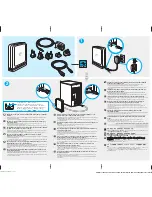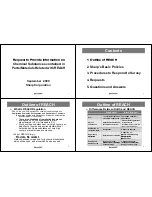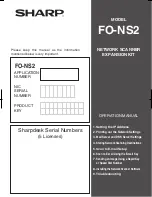
ExtremeWare XOS 11.5 supports only the Summit X450 family of switches and the BlackDiamond 8800 series switch.
ExtremeWare XOS 11.5 Command Reference Guide
1463
25
RIP Commands
This chapter describes commands used for the interior gateway protocol RIP.
Routing Information Protocol (RIP) is an Interior Gateway Protocol (IGP) first used in computer routing
in the Advanced Research Projects Agency Network (ARPAnet) as early as 1969. It is primarily intended
for use in homogeneous networks of moderate size.
To determine the best path to a distant network, a router using RIP always selects the path that has the
least number of hops. Each router that data must traverse is considered to be one hop.
The routing table in a router using RIP contains an entry for every known destination network. Each
routing table entry contains the following information:
●
IP address of the destination network
●
Metric (hop count) to the destination network
●
IP address of the next router
●
Timer that tracks the amount of time since the entry was last updated
The router exchanges an update message with each neighbor every 30 seconds (default value), or if
there is a change to the overall routed topology (also called
triggered updates
). If a router does not receive
an update message from its neighbor within the route timeout period (180 seconds by default), the
router assumes the connection between it and its neighbor is no longer available.
A new version of RIP, called RIP version 2 (RIPv2), expands the functionality of RIP version 1 to
include:
●
Variable-Length Subnet Masks (VLSMs)
●
Next-hop addresses
●
Support for next-hop addresses allows for optimization of routes in certain environments
●
Multicasting
If you are using RIP with supernetting/Classless Inter-Domain Routing (CIDR), you must use RIPv2
only, and RIP route aggregation must be turned off.
















































